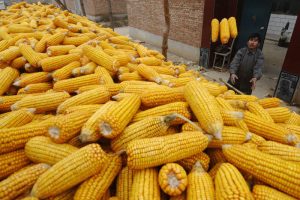(ATF) US maize (corn) futures rallied to a 7-and-a-half year peak on February 8 amid strong China demand for the crop, and ahead of a monthly US government report expected to show tightening stocks.
All eyes are on the US Department of Agriculture World Agricultural Supply & Demand Estimates (WASDE) report scheduled for release during the US trading session on February 9.
Analysts expect the USDA to make further cuts to its end-of-season supply outlooks for maize. “Market expectations [are] a sharp downward revision in US corn … stocks for the 2020/21 marketing year,” said Warren Patterson, head of commodities strategy at ING in Singapore.
He said the consensus was that US stock estimates could be revised down from 1,552 million bushels to 1,384 million bushels at the end of 2020/21, mainly because of increasing shipments to China. There are about 39.36 bushels in a tonne of maize.
Demand, meanwhile, remains robust, particularly from China. The world’s top commodity importer has already made its largest US maize purchases on record.
“Record export sales of US corn and expectations of stronger imports from China continue to be supportive for US corn prices,” Ole Hansen, head of commodity strategy at Saxo Bank in Copenhagen, said.
SUPPLY CHAIN DELAYS
The USDA reported net sales of nearly 7.5 million tonnes of maize for the week ending January 28, significantly higher than the 1.85 million tonnes of sales in the previous week, and levels not seen since at least 1990.
Hansen said bottlenecks in global transport and supply lines were forcing costs higher. “The latter is driving a three to four-fold increase in the cost of transporting goods in containers from China to the rest of the world, while adding an additional cost to already rising food commodities such as soybeans and corn,” he said.
January’s WASDE report suggested a tightening market for wheat, maize and soybeans, thus supporting the upward pressure in prices, said Charles Robertson, global chief economist at Renaissance Capital in London. “I’ve been suggesting the copper, wheat, iron, corn price surge of 2020 was related to yuan appreciation and Chinese stock-building.”
Adverse weather in key crop production areas has offered additional strength. “Production for Argentina and Brazil is projected to decline .. which has more than offset projected increases for China and India,” warned Akhil Patel, analyst at Shore Capital in London.
Wheat and soybeans futures were also showing bullishness. Wheat futures drew some additional support from potentially crop-damaging cold across the US wheat belt, while rains in parts of Brazil stoked concerns about delays in harvesting the soybean crop.
With reporting by Reuters
ALSO SEE:
























